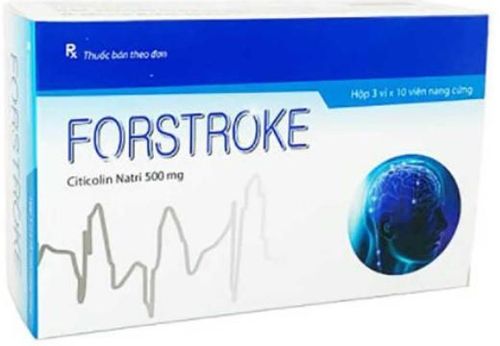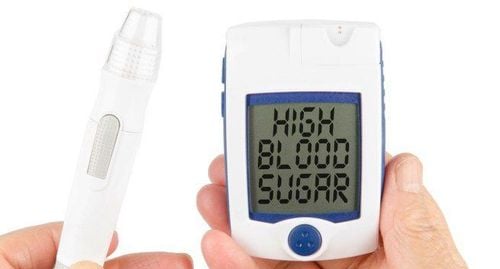This is an automatically translated article.
“Feeling” is subjective, but at the same time shows the objective relationship between people and the environment. Sensory disturbances are signs when the body's reactions to the surrounding environment are abnormal.1. Learn about sensory disturbances
Sensory disturbance is a disorder in which the brain processes sensory information abnormally, which can affect all senses or just one. In fact, sensory disturbances occur more frequently in children than in adults.
Sensory disturbances may present with either or both of the sensory-related manifestations, including:
Negative sensory disturbances: impairment, loss of one or more types of sensory perception. Positive sensory disturbances: abnormal sensory perception in the form of paresthesias (eg, pins and needles) or hypersensitivity to sensory stimuli
2. Causes of sensory disturbances due to physical mechanisms
Sensory disturbances may occur alone, but may also be associated with motor weakness or other neurological signs, thereby identifying the specific location of the disorder. Manifestations and causes of each group of sensory disorders based on the location of damage to the nervous system according to the following table:
| Vị trí tổn thương | Loại rối loạn cảm giác | Nguyên nhân (có thể) |
| Dây thần kinh ngoại biên | Đau và cảm thấy dị cảm ở khu vực bên trong dây thần kinh, sau đó giảm và mất dần cảm giác liên quan đến chức năng cảm giác | Chèn ép, chấn thương dây thần kinh |
| Rễ thần kinh | Cơn đau dữ dội khi thực hiện các hoạt động làm tăng áp lực bên dưới (ví dụ như ho, đi đại tiện…), có dị cảm bên trong rễ thần kinh tương ứng, sau đó mất dần cảm giác. | Thoát vị đĩa đệm, bệnh đa đĩa đệm do viêm cấp tính, tổn thương thoái hóa nặng của cột sống, có khối u... |
| Tổn thương tủy sống |
1) Mất cảm giác dưới mức tổn thương. 2) Hội chứng Hemicord: mất cảm giác rung và vị trí hai bên, mất cảm giác đau / cảm nhận nhiệt độ ở 1 bên. |
Chấn thương, khối u, nhiễm trùng, thiếu máu cục bộ hoặc xuất huyết... |
| Hội chứng động mạch cột sống trước | Mất cảm giác dưới mức tổn thương, mất cảm giác đau và cảm nhận nhiệt độ tại vị trí tổn thương (bị liệt) | Huyết khối động mạch cột sống trước |
| Các cột sống sau của tủy sống | Mất cảm giác rung và đau, cảm ứng nhiệt độ (Mất phản xạ) | Thoái hóa tủy sống, thiếu vitamin B12, giang mai thần kinh... |
| Thalamus | Mất cảm giác đau và cảm nhận nhiệt độ ở mặt bên cánh tay và chân. | Đột quỵ do thiếu máu cục bộ hoặc xuất huyết; khối u |
| Vỏ não đỉnh | Mất khả năng đánh giá cường độ và vị trí kích thích, suy giảm khả năng nhận thức về chữ cái, con số, mất khả năng phân biệt 2 điểm... | Đột quỵ do thiếu máu cục bộ hoặc xuất huyết, khối u. |

Rối loạn cảm giác tại vị trí Thalamus khiến người bệnh mất cảm giác đau ở mặt bên cánh tay
3. Specific symptoms of sensory disorders in children
Sensory disturbances can affect one or more senses at the same time. In particular, the symptoms of sensory disorders in children are easy to recognize, including:
Children overreact to sounds and lights. Itching or pain when getting dressed. Gentle touches can also cause pain. Vomiting when eating, poor balance. Poor response to sudden movements, collisions, noise or sudden lights. Abnormal behavior. Poor motor skills, difficulty; language delay. Some children have negative sensory disorders with symptoms:
Likes to seek thrills through jumping, climbing, turning. Spins continuously but not dizzy. Likes to chew on things around. Likes visual stimulation, constantly looking at TV, electronic toys. There is a problem with sleep. Inability to self-awareness when face is dirty or runny
4. Synthetic treatment of sensory disorders
Treatment of sensory disturbances usually begins with diagnosis, finding the location of the lesion, and treating the cause in adults. However, if the sensory disturbance is due to an existing brain activity from an early age or due to brain damage, you need some therapy to fix it.
4.1 Sensory Integration (SI) Therapy This type of therapy involves active and energetic activities in a controlled environment. As a result, the patient will be able to gradually experience the stimuli in a sequenced manner. Through this therapy, the patient will practice reflexes to cope with the change around.

Người mắc rối loạn cảm giác cần được thăm khám để có liệu pháp điều trị hợp lý
4.2 Adjustment of daily living and nutrition regimen Nutrition and living regimen will be adjusted depending on different groups of sensory disorders, including:
Walk every day for at least 10 minutes. Listen to music, reach for toys. A nutritionally complete diet, recommended by experts depending on the condition. 4.3 Movement therapy People with sensory disturbances due to abnormal brain activity also need an environment where common motor skills are practiced, such as handwriting, using scissors, climbing stairs, throwing a ball, etc.
It can be said that sensory disturbances can occur from childhood, due to abnormalities from the brain in processing sensory signals, but can also come from injuries and diseases in adulthood. With each mechanism causing the disorder, we will have different therapies / treatment modalities for sensory disorders.
In a nutshell, sensory disturbances include all abnormalities in sensory pathways, transmission, and processing. This needs to be considered a real disease in order to have an effective approach and treatment, and the patient also needs appropriate support to quickly integrate well into the community.
Vinmec International General Hospital with a system of modern facilities, medical equipment and a team of experts and doctors with many years of experience in medical examination and treatment, patients can rest assured to visit. examination and treatment at the Hospital.
Please dial HOTLINE for more information or register for an appointment HERE. Download MyVinmec app to make appointments faster and to manage your bookings easily.













